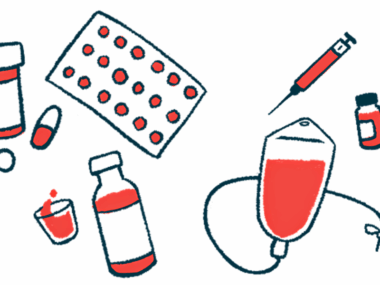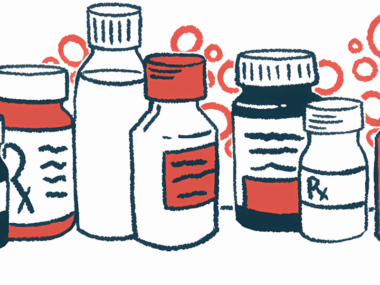MSTOP Program in California Cuts DMT Costs and MS Relapse Rates
Written by |

A program aimed at optimizing the use of highly effective therapies successfully lowered treatment costs and relapse rates among people with multiple sclerosis (MS) in Southern California, according to a study.
“Our novel physician-led approach simultaneously reduced MS DMT [disease-modifying therapy] expenditures and the frequency of MS relapses. We know of no other health system intervention that has reduced MS DMT expenditures or improved outcomes,” the researchers wrote.
“Our focus on health system progress toward meaningful, measurable targets could serve as a model to improve quality and affordability of MS care in other settings,” they added.
The study, “Decreasing Multiple Sclerosis Treatment Expenditures and Improving Quality at the Health System Level,” was published in Annals of Neurology.
MS is typically treated with disease-modifying therapies that aim to reduce relapses and prevent disability progression. But in the United States, the rising cost of these DMTs has led to “an exponential increase in societal MS treatment expenditures and a 7-fold increase in patient out-of-pocket expenses,” the researchers wrote.
U.S. health systems have responded by enacting “step therapy” formulas under which individuals are directed to an initial lowest cost DMT, with access to others coming after their health teams document either treatment failure or a person’s inability to use a low-cost DMT.
This approach, the researchers noted, could affect disease outcomes by delaying the use of more effective treatments.
A team of researchers with the Kaiser Permanente healthcare system developed and began implementing in 2012 an intervention called Multiple Sclerosis Treatment Optimization Program (MSTOP), which aimed to optimize MS treatment and outcomes.
In brief, the program had three main goals: to increase the use of highly effective DMTs according to a patient’s risk of disease progression; to design an “ethical, cost-sensitive” formula of preferred DMTs that would reduce patient expenses without reducing care quality; and to campaign against new DMTs that provided low value to patients, which essentially means the benefits of a therapy were not seen to be high enough to justify its cost.
Highly effective therapies preferred by the researchers were those with evidence of superiority in randomized controlled trials, and included Tysabri (natalizumab), rituximab, and, briefly, fingolimod (sold as Gilenya; generics not yet available in the U.S.).
The researchers described the effects of the program in patients using the Kaiser Permanente Southern California (KPSC) healthcare system between 2012 and 2018. For comparison, the team examined the overall costs and outcomes of MS patients in this region prior to program implementation (from 2009 to 2011).
They also evaluated outcomes in another Kaiser Permanente healthcare region of similar size and demographics that did not endorse MSTOP until 2018, called a comparator region. Therapy prices are the same across regions in the Kaiser Permanente system, the study noted.
The program met its first goal, with the use of highly effective therapies in the KPSC region increasing from 11.6% in 2012 to 43.2% in 2016, and to 62.5% at the close of 2018. The use of these agents rose much more slowly in the comparator region, from 12.2% to 16.8% in 2012–16, and to 39.8% by 2018’s close.
A corresponding decrease in relapses was also observed. In 2009, 4.9% of people were on highly effective DMTs, with an annual relapse rate (ARR) of 182.2 per 1,000 patient-years (a measure that takes into account the number of patients and the overall follow-up time for each patient). By 2018, the annual relapse rate had declined to less then half — 67.3 per 1,000 patient-years.
The average annual cost of DMTs per patient also declined from a peak of $43,100 in 2014 to $26,300 in 2018 — a significantly greater decline than that observed in the comparator group, which went from $53,100 at its 2015 peak to $40,000 in 2018.
The KPSC group also saw a significant decline in the use of low-value DMTs relative to the comparator — meeting the program’s third goal. The drop in use of these therapies came with significant financial benefit, with the KPSC system spending an overall $81.9 million less than the comparator region in 2018.
“Annual DMT expenditures in 2018 were less than those in 2011” for KPSC, “even with an 11.3% increase in DMT-treated” patients, its researchers wrote. “In contrast, Medicare’s MS DMT costs rose on average 12.8% annually during the same timeframe.”
While the program showed clear success in lowering DMT costs, “the biggest limitation of this study is whether MSTOP can be adapted to non-[Kaiser Permanente] settings. This will depend upon insurers and clinicians’ willingness to work together,” the team wrote.
According to the investigators, one important aspect of promoting cost reductions for MS patients is to encourage clinicians to prescribe generic versions of effective therapies.
“Our experience suggests that physician-led rational prescribing programs could lead to substantial improvements in quality and affordability in the care of [people with] MS in other settings,” the researchers concluded.






